Icy Inverts Cruise 2013 - Shipboard Blog - Feb 3rd to Feb 6th
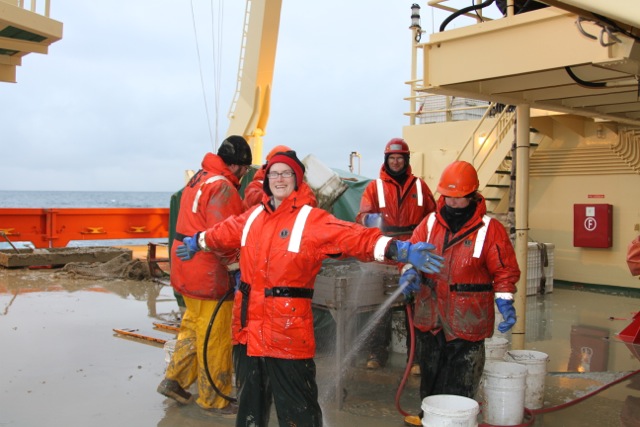
6 February 2013: Somewhere in the Ross Sea (74o 30.3`S, 167o 31.3`W)
The end of our journey......
About 5 weeks ago, we started our cruise with great ambitions and hopes (above picture) for a successful scientific journey to the Bellingshausen, Amundsen, and Ross Seas. Since leaving South America (twice!), we’ve performed countless trawls and tows, seen amazing sights, and have collected and photographed (below picture) enough animals to complete a large number of scientific investigations in our respective laboratories back in the “real world”.
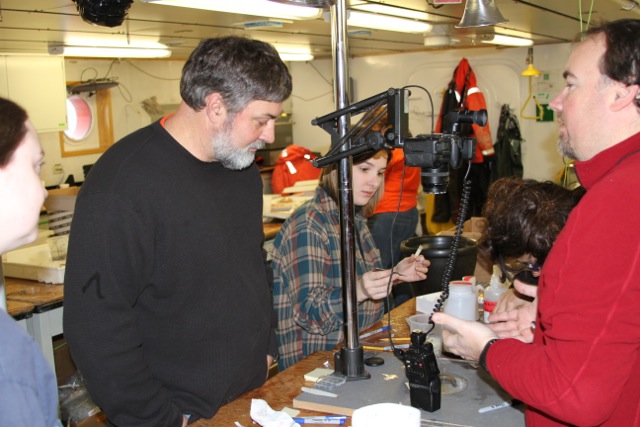
After this long at sea, we have started to discuss and plan our journey home. In four days from now, we’ll land at McMurdo Station and start unloading our samples (and ourselves) from the ship. The samples, which we are currently inventorying and packing, will be shipped via air-freight back to our home institutions. We will spend a day or so at the station waiting for our “ice flight” to Christchurch, New Zealand. In that time, we’ll be able to get souvenirs from the station store, send postcards to loved ones back home, and we’ll be able to explore the station and surrounding areas. One of the sights I personally can’t wait to visit is the hut that Robert Scott, a very famous Antarctic explorer, lived in while he was in Antarctica many years ago.
After getting off the ship, our crew will also start getting used to life on land again after spending six full weeks on the ship. Many of us will experience what’s known as “dock rock”….a condition where it feels like the ground is swaying like the movement of a ship. Having had this happen to me before, it’s an eerie situation, but normal, and usually passes in a couple of days.
Our flight to New Zealand is scheduled for the evening of February 11th. We’ll fly overnight, spend a day or so in Christchurch, and then our team will part ways and start heading home. Every one of these trips is unique, but I can say that the group Ken Halanych, Scott Santos and I (below picture) assembled for this trip has been amazing. The long hours and hard work have paid off and will no doubt result in more amazing scientific discoveries long after we return home.
Best to all,
Contributed by: Dr. Andrew Mahon, Co-Principle Investigator, Central Michigan University
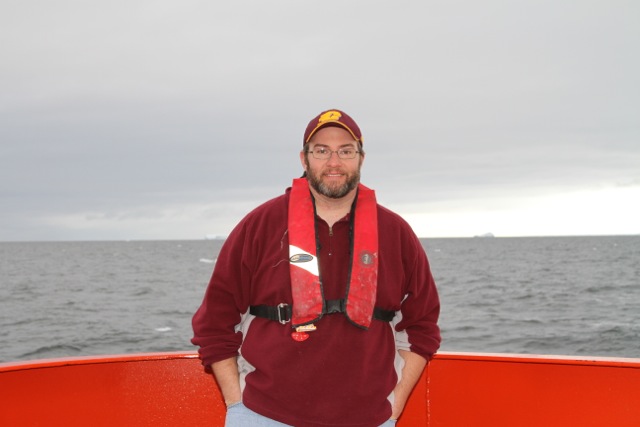
***************************************************************************************
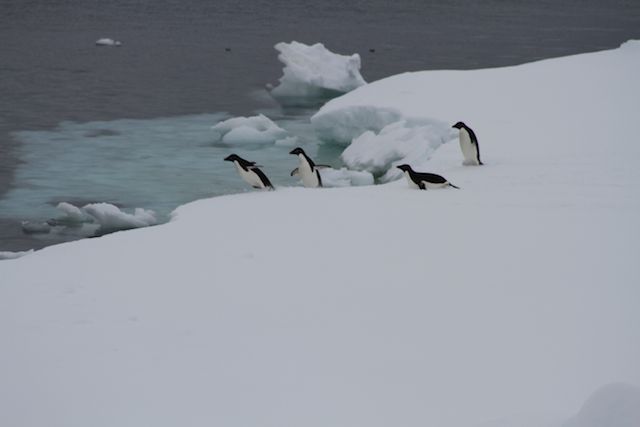
05 February 2013: Near Ross Island (76o 55.2`S, 170o 00.1`E)
As I write my last blog for this trip, I am filled with gratitude for my good fortune. The scenery has been breathtaking, as has been the ability to see and handle so much living wildlife—wildlife only previously viewed through the lens of a television or a textbook (above picture). But what has impacted me the most has been the work itself, and the proximity to so many knowledgeable and caring individuals.
There have been bad days, of course, days filled with nausea, sleep deprivation, and a longing for familiar faces and the sound of wind breathing through the leaves of trees. But as my once-in-a-lifetime journey draws to a close, I regret nothing. Never in my life have I been in a position where almost any question that I have can be answered accurately by an expert in the field—or where I can apply everything that I have spent the last twenty-two years of my life learning. The individuals on board the Nathaniel B Palmer, from the marine technicians, to the scientists, to the crew and the cook, have all been so generous with their lifetime of accumulated knowledge and experience.
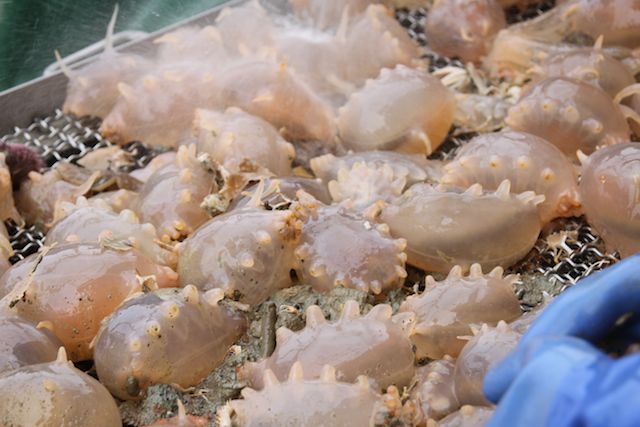
Working with this group has made me realize that I want to spend the rest of my life surrounded by people like them. On this ship, everyone works themselves to the bone, but we also laugh hard. The maritime wedding, our christening in the name of Neptune as we dared to crossed the Antarctic circle, and our Sea Pig Parade (above picture) are only a few of the many memories that I will take home with me. So many people here have taken me under their wing, given me advice, and helped to inaugurate me into the real world of science—not that abstract thing you learn about in school. Besides that, everyone’s passion is contagious. I have seen grown faces, drawn from exhaustion, suddenly light up into childish fascination and glee upon finding some new or rare organism. And I have felt that myself—the excitement that comes from touching and learning about something completely new.
I have always struggled to find my place in this world, but I know that I want that. This. I want a job that makes me work, cry, and laugh as much and as hard as I have on this trip. I have challenged the boundaries of my knowledge, experience, and emotional strength, and I have made friendships that I hope will last me a lifetime. This journey has helped me grow inexorably, not just as a scientist, but as a person.
So to Andy Mahon and Ken Halanych, I say thank you. Thank you for allowing me to be apart of this, because it has truly changed not only my mettle as a person (below picture), but the course of my future as well.
Contributed by: Abigail Hollingsworth, Undergraduate Researcher, Central Michigan University
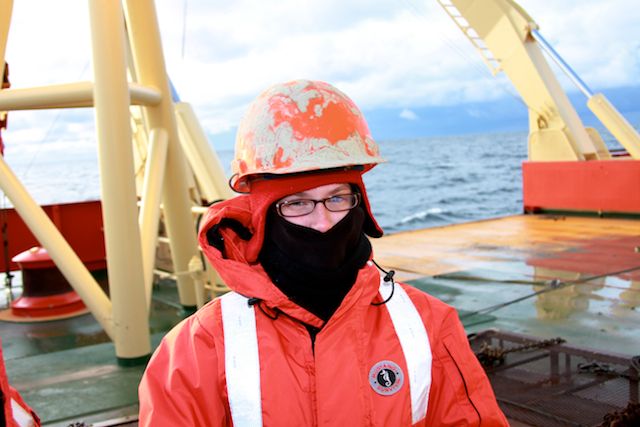
***************************************************************************************
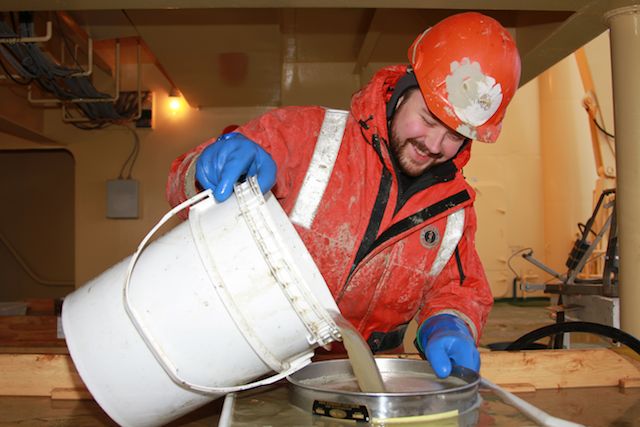
4 February 2013: In the Ross Sea (76° 13.8`S, 174° 49.3`E)
You might not consider a sea urchin or snail that fits in the palm of your hand to be a “big” animal. Compared to humans, they’re downright small. However, animals span a vast range of body sizes. At one extreme end, you have blue whales (the largest animals to have ever lived). At the opposite end of the size spectrum are tiny animals commonly called meiofauna. Meiofauna is a term for microscopic organisms that are so small that they live in the spaces between grains of sand. Why would anyone care about organisms that are so extremely small? Meiofauna are an important food source for many larger organisms so they are incredibly important from an ecological standpoint. Also, many groups of animals only contain tiny representatives (e.g., some very interesting groups of worms thought to be important to understanding early animal evolution). The molluscs that I study (Aplacophora) can be large but most of them are quite small. Therefore, I’m spending as much time as I can while onboard sorting through meiofauna.
To isolate meiofaunal animals from their environment, we take mud or sand sampled with the Blake trawl or megacorer, put it in a bucket, gently add water (some meiofaunal animals are delicate), stir it up, and pour the water/mud/animal mixture out onto a fine mesh screen submersed in water (above picture). Keeping the screen in a pan of water helps prevent the animals from getting stuck to the screen and squashed. We then rinse what was collected on the screen into a container and sort through it under a microscope one dish at a time.
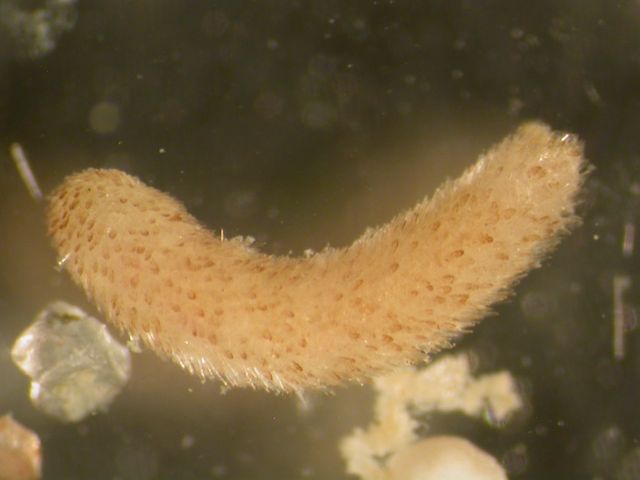
I can only compare the experience of examining meiofauna to going on a teeny tiny safari. I’ve come across representatives of most of the major animal phyla including molluscs for myself, nemerteans of interest Megan Schwartz, annelids of interest to Ken Halanych, and crustaceans of interest to Christoph Held as well as other colleagues not on board. One of the animals that I’m most excited about is the aplacophoran Phyllomenia (above picture). Phyllo is Greek (or is it Latin? Not having instant access to the internet is really something I take for granted!) for leaf. The name reflects the unusual leaf-shaped calcareous sclerites that cover the body of this animal. Phyllomenia is thought to be a plesiomorphic (“primitive”) mollusc so I’m very interested to be able to study its anatomy and genes. Notably, it was described from bulk-fixed material in 1913 and I am almost certainly the first person to ever actually see a living specimen.
I'm off into the 2AM sunset (below picture) to sort more meiofauna!
Best wishes,
Contributed by: Kevin Kocot, Ph.D. Candidate, Auburn University
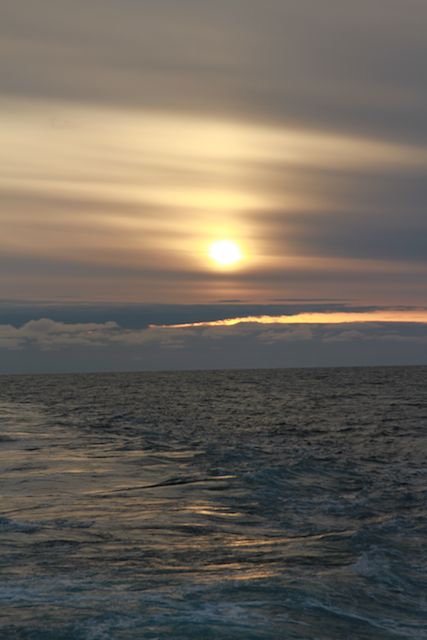
***************************************************************************************
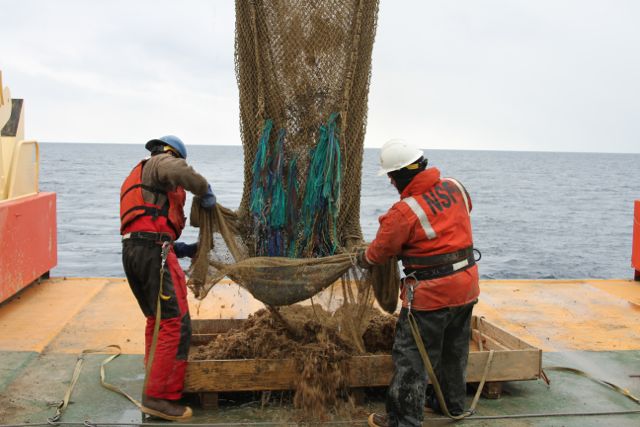
03 February 2013: Middle of the Ross Sea (77o 00.1`S, 175o 12.3`W)
This expedition is not yet over, but it is safe to say we have begun our final sprint. Beginning to reflect and reminiscence on the fruits of our labor helps to keep the morale up and our eye on the prize. I am going to try to depict a short montage, blog form, highlighting some of the most classic moments of this research cruise thus far:
- The first moment: the moment of truth. It is the time right before the trawl’s net comes up high enough for all us bundled on the stern’s deck, buckets filled, forceps in hand, to see what the consistency and size of the trawl will be. It is a very conflicted time considering half of you is anxious, hoping that you will see the heaps of the organisms you love, while the other half of you is terrified that it will be too much material and take hours and hours to process. No matter what the result ends up being, good or bad, we all seem to laugh and get down to business (above picture).
- Another “classic” moment is when you see your first huge iceberg and then get further blown away after being reminded, “and that’s only the top 10% of it!” (below picture)
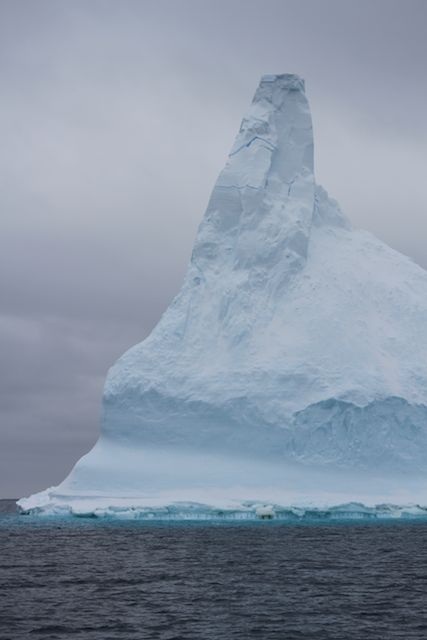
- The times tediously sorting through plankton finding pilidium larvae impailed by glassy diatoms.
- That first time passing through the bio lab threshold and being immediately choked by the stench of cooked echinoderms, a byproduct of Ashley’s work.
- Or when we found a sea pig so large, your could swaddle it like an infant.
- The time I first saw it snowing over the ocean.
- The moment when you realized that you have been standing up labeling tubes and dissecting tunicates and other critters for over four hours straight.
- The time mohawks became trendy again.
- The one hot minute when Kevin hits the pillow and realizes this is the first bit of sleep he has gotten in over 36 hours.
- The many moments when we were on the bow waiting to observe charismatic megafauna with no luck, until Andy walks inside, and then we see 4 Minky whales.
- The times when Cheps sends out a boat-wide email after a frigid 12-hour shift saying “the sauna has been turned on.”
- Finally, at 2:00 there was the moment I was awoken from a deep sleep to come outside, quickly! Right before the ship’s path and getting closer there was the continental ice shelf towering over 150 feet tall and spanning for seemingly an infinite number of miles in both directions. The sun illuminated the ice sheet from behind and the face of the ice edge (where icebergs are born) reminded me of the textbook pictures of freeze fracture microscopy. We were in the Ross Sea and deeper south than anybody could go on a ship, let alone all those Auburn-ites back at school. What a treat to be allowed to wake up to such an unforgettable sight. It is all these moments and then some that have shown me and others on this ship that there really is no other type of research quite like that of marine biology in Antarctica and we are grateful to be apart of it (below picture).
Contributed by: Alex Medved, Undergraduate Researcher, Auburn University
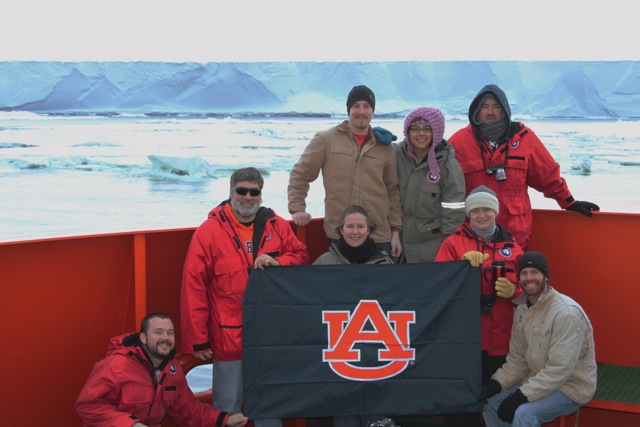
Last updated: 11/12/2013
